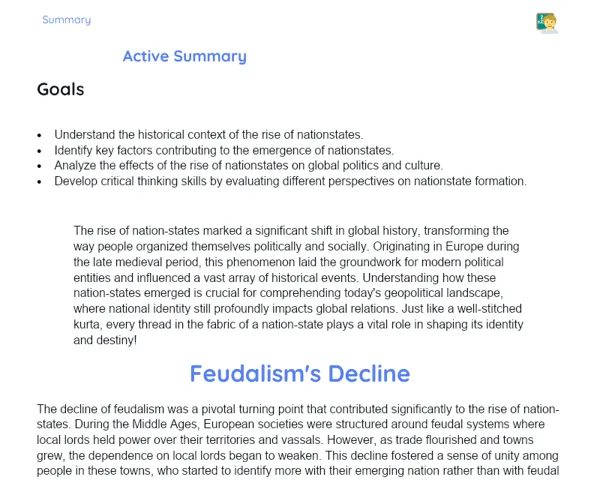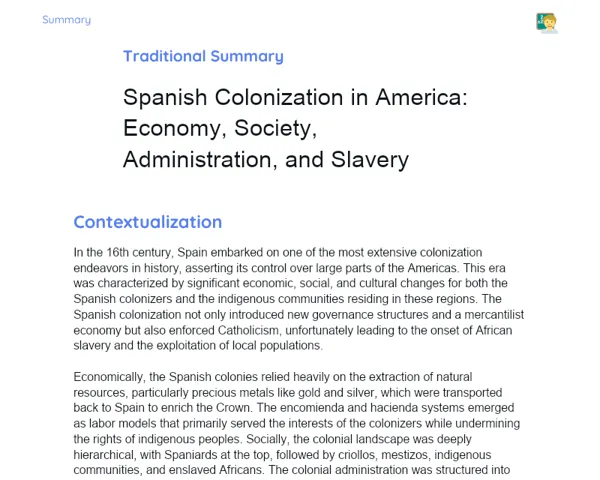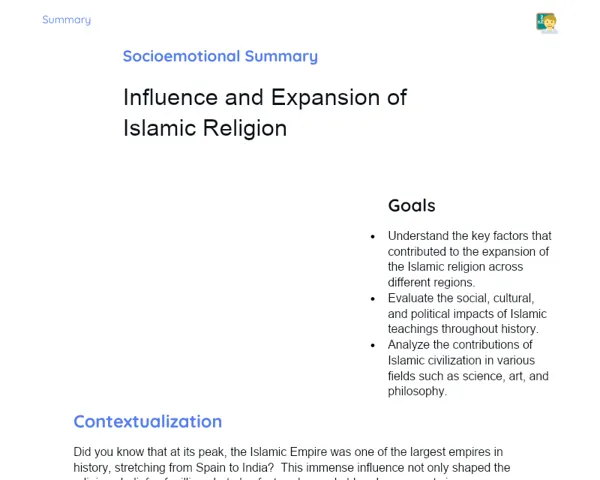Summary Tradisional | Experience Recording
Contextualization
Throughout history, storytelling has been an integral part of our lives, allowing us to share insights about our families and communities. These narratives enrich our understanding of daily life, traditions, customs, and pivotal events. In today's digital age, recording these experiences has become easier than ever, whether through interviews, photographs, letters, or historical documents. It's crucial to document these memories to ensure they endure over time and that future generations can connect with the rich history of their families and communities.
Recording stories and experiences nurtures the cultural and historical consciousness of a community. This encompasses folklore, legends, and even real accounts of significant events. By capturing these stories, we preserve a legacy that can be cherished and passed down through the generations. Additionally, engaging in this practice hones valuable skills such as research abilities and attention to detail, which are beneficial across various fields.
To Remember!
What is an experience record?
An experience record is essentially a document or narrative that contains information about the events, stories, and traditions of individuals, families, or communities. These records can take many forms including writings, audio recordings, videos, photographs, and artifacts. The fundamental objective is to capture and safeguard this information to share it across generations, especially with those yet to come.
The value of an experience record stems from its potential to keep the cultural and historical consciousness of a community vibrant. These records act as a glimpse into the past, helping individuals understand how their forebearers lived, their traditions and customs, and the significant moments in their lives. In the absence of such records, many important pieces of history may fade into oblivion.
Furthermore, experience records help honour the array of stories and backgrounds within a community. Each person has a unique narrative, and documenting these experiences contributes to a rich tapestry of human experiences. These records can serve educational purposes or simply act to preserve collective family and community memories.
-
Experience records can be written, recorded, or photographed.
-
Preserves the cultural and historical memory of a community.
-
Celebrates the diversity of stories and experiences.
Importance of recording experiences
Capturing experiences and narratives is vital for maintaining the cultural heritage and historical memory of a community. It enables future generations to discover their roots, understand the environment their ancestors thrived in, and appreciate their traditional practices. Without these accounts, many crucial fragments of culture may be compromised, diminishing our heritage.
Additionally, documenting experiences fosters respect and acknowledgment of each individual's journey. By recording these stories, we shine a light on the wealth and variety of human experiences, enriching our comprehension of society as a whole. Such records can also inspire and enlighten, offering invaluable lessons applicable in diverse contexts.
Lastly, documenting experiences nurtures a sense of identity and unity within a community. Knowing that their stories are cherished and preserved intertwines the bonds between community members, fostering solidarity and a shared sense of belonging. This becomes particularly important during times of transition or crisis, when shared memories can provide a sense of stability.
-
Preserves cultural and historical memory.
-
Promotes respect and appreciation of individual experiences.
-
Strengthens identity and community cohesion.
How to collect information from different sources
Gathering information for experience records can involve multiple techniques and sources. One effective method is through conducting interviews with family or community members. These interviews can be documented in audio or video format or transcribed into writing. Open-ended questions that promote heartfelt storytelling can yield rich, detailed narratives.
In addition, old documents and personal artifacts provide a treasure trove of information. Photographs, letters, diaries, certificates, and similar items offer both factual data and contextual understanding, helping to create a fuller picture of the time they represent. Visits to local archives, libraries, and museums can enhance this research process.
Moreover, leveraging modern technology can significantly aid in collecting and organizing this information. Apps, digital cameras, and smartphones can be utilized to record interviews, photograph documents, and store the gathered data systematically. The internet serves as an excellent resource, granting access to databases, historical records, and various research tools.
-
Interviews with family members and community members.
-
Old documents and objects such as photographs and letters.
-
Use of technology to capture and organize information.
Methods of note-taking and organization
For collected information to be actionable in the future, it's important to document and organize it in a clear, systematic manner. A time-honoured method is using diaries or notebooks to handwrite details from interviews, stories, and events. This technique allows for personal and thorough documentation of experiences, making them easy to reference later.
Another effective way is to create record cards where specific pieces of information are noted. These can be organized by theme, date, or individual, making future reference simpler and more structured. This approach is especially instrumental when dealing with substantial amounts of data.
Audio and video recordings serve as valuable note-taking tools as well. They capture not just the spoken words but also the emotions and expressions of individuals, offering a richer account of experiences. However, it’s important to accompany these recordings with transcriptions or detailed notes to facilitate ease of use later.
-
Use of diaries or notebooks.
-
Creation of record cards organized by theme or date.
-
Audio and video recordings with detailed transcriptions.
Practical examples
To demonstrate how experience records can be created, we can consider practical examples, like travel diaries. These diaries showcase a person's journeys and discoveries, detailing the places visited, people encountered, and experiences enjoyed. Such records preserve personal memories while also serving as a guide for others exploring those destinations.
Documenting significant community events provides additional pertinent examples of experience records. These can include narratives of festivals, ceremonies, historical milestones, or notable changes within the community. Recording these occurrences fosters a collective history that can be acknowledged and valued by all.
Life stories of influential community figures are likewise important examples. Biographies and autobiographies illuminate their lives, contributions, and the impact they’ve made. These records not only preserve personal legacies but also serve as inspiration and learning resources for future generations.
-
Travel diaries document personal adventures and discoveries.
-
Accounts of community events preserve shared history.
-
Biographies of influential people offer inspiration and education.
Key Terms
-
Experience Records: Documentation of events, stories, and traditions of a person, family, or community.
-
Interviews: Method of collecting information through conversations with people.
-
Old Documents: Photographs, letters, diaries, and other records that provide information about the past.
-
Note Organization: Methods for keeping information clear and accessible, such as diaries, cards, and recordings.
-
Cultural Preservation: The act of keeping alive the memory and traditions of a community.
Important Conclusions
Recording stories and experiences from family and community is vital for preserving our cultural and historical memory. By cultivating the skills to gather information from varied sources—like interviews, old documents, and photographs—students enhance their research and documentation capabilities. These practices not only uphold communal traditions and histories but also promote a deeper understanding and appreciation of diverse experiences.
Implementing effective note-taking and organization methods—such as diaries, record cards, and audio or video recordings—ensures that the information collected is clear and easy to understand in the future. These records foster a sense of identity and belonging within the community, strengthening the connections among its members and enhancing unity and solidarity.
By delving into practical examples, such as travel diaries and narratives of community events, students can witness these techniques in action. This not only motivates them to preserve their own stories but also broadens their perspective of human experiences. Encouraging students to continually explore these methods can significantly contribute to the preservation of their communities' rich cultural and historical heritage.
Study Tips
-
Interview family members and community members to gather stories and experiences, noting important details for future reference.
-
Visit libraries, historical archives, and museums to discover old documents and artifacts that can enrich your experience records.
-
Practice organizing notes using diaries, record cards, and audio recordings, ensuring that the information is clear and accessible.



